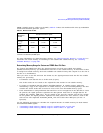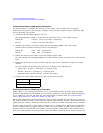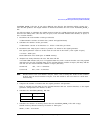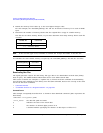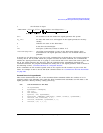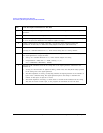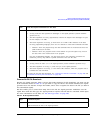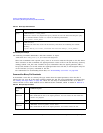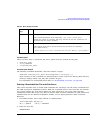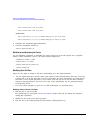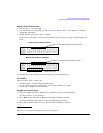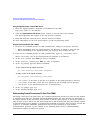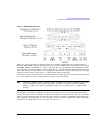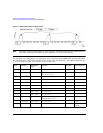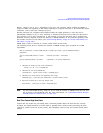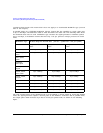
Agilent N518xA, E8663B, E44x8C, and E82x7D Signal Generators Programming Guide 301
Creating and Downloading User-Data Files
User File Data (Bit/Binary) Downloads (E4438C and E8267D)
File Name Syntax
There are three ways to format the file name, which must also include the file path:
• "BIN:file_name"
• "file_name@BIN"
• "/user/BIN/file_name"
Command Syntax Example
The following command downloads a file that contains 34 bytes:
:MEM:DATA "BIN:new_file",#2347^%S!4&07#8g*Y9@7.?:*Ru[+@y3#_^,>l
After execution of this command, the signal generator creates a file in the Binary (Bin) directory
(memory catalog) named “new_file” that contains 34 bytes.
For information on downloading block data, see “Downloading User Files” on page 296.
Selecting a Downloaded User File as the Data Source
This section describes how to format SCPI commands for selecting a user file using commands from
the GSM and Custom modulation formats. While the commands shown come from only two formats,
the concept remains the same when making the data selection for any of the other real-time
modulation formats that accept user data. To find the data selection commands for both framed and
unframed data for the different modulation formats, see the signal generator’s SCPI Command
Reference.
1. For TDMA formats, select either framed or unframed data:
:RADio:GSM:BURSt ON|OFF|1|0
ON(1) = framed OFF(0) = unframed
2. Select the user file:
Query :MEM:DATA? "bin:file_name"
This returns information on the named file: <bit_count>,<block_data>.
Within the context of a program, this query extracts the user file, provided it was
download with the proper command.
Query :MEM:CAT:BIN?
This lists all of the files in the bit file directory and shows the remaining
non-volatile memory:
<bytes used by bit files>,<available non-volatile memory>,<"file_names">
a. See “FTP Procedures” on page 303.
Unframed Data
Table 8-4 Binary File Type Commands
Command
Type
Command Syntax



